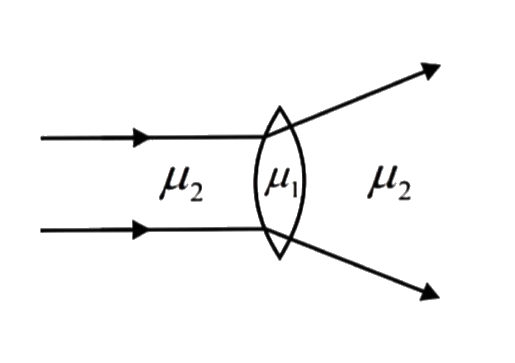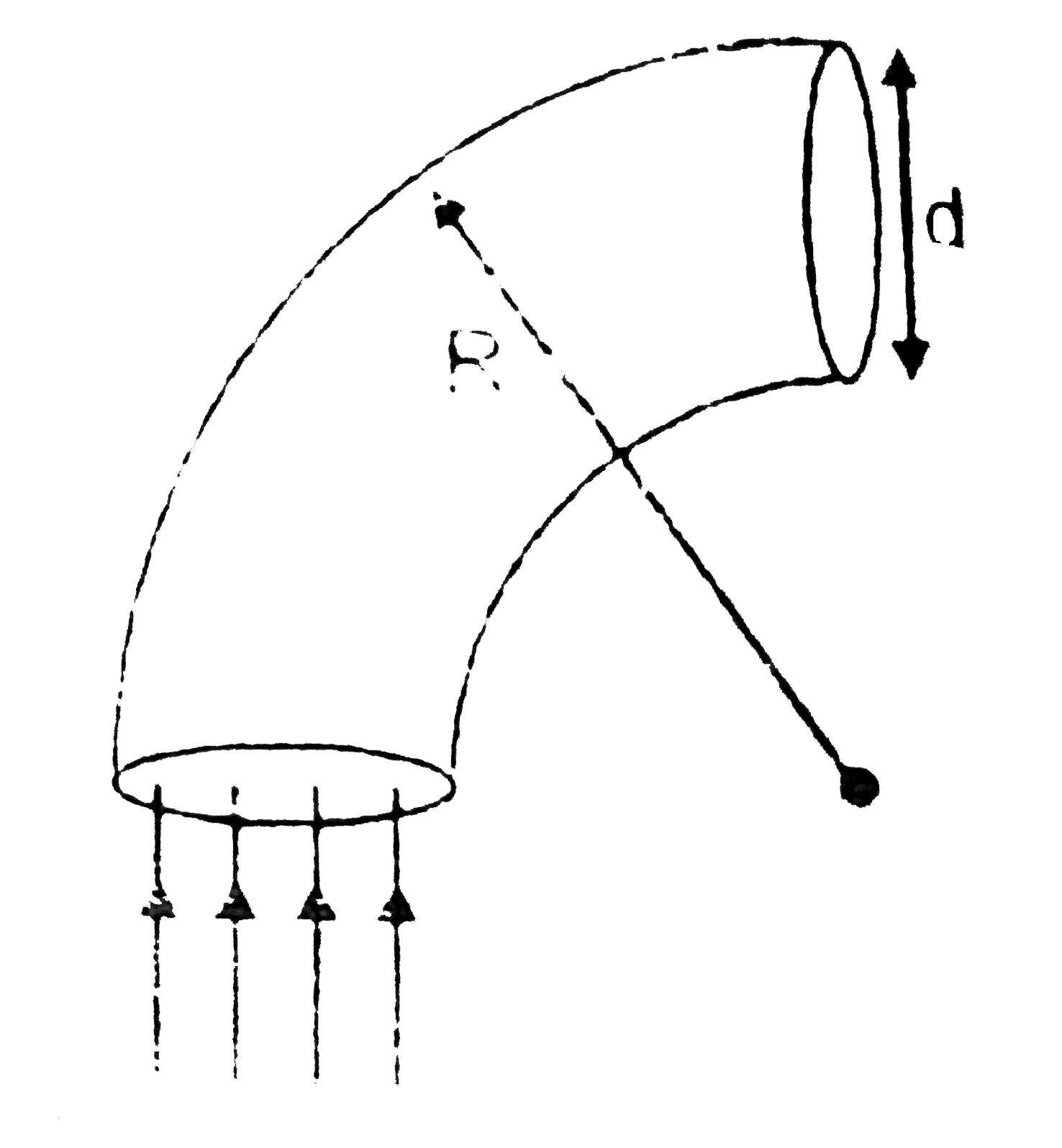On a hot summer night, the refractive index of air is smallest near the ground and increases with height from the ground. When a light beam is directed horizontally, the Huygens principal leads us to conclude that as it travels, the light beam:
goes horizontally without any deflection
bends down wards
bends upwards
becomes narrower
The correct Answer is:C
To solve the problem, we need to analyze the behavior of light as it travels through air with varying refractive indices. Here’s a step-by-step solution:
Step 1: Understand the Refractive Index Variation
On a hot summer night, the refractive index of air is smallest near the ground and increases with height. This means that the air near the ground is less dense (rarer medium) compared to the air at higher altitudes (denser medium).
Step 2: Apply Huygens' Principle
According to Huygens' principle, every point on a wavefront can be considered a source of secondary wavelets. The new wavefront is formed by the envelope of these wavelets. When light travels from a medium of lower refractive index to a medium of higher refractive index, it bends towards the normal.
Step 3: Analyze the Light Beam's Path
Since the light beam is directed horizontally, we can consider the transition from the rarer medium (lower refractive index near the ground) to the denser medium (higher refractive index at a height). As the light beam moves upward, it encounters air with a higher refractive index.
Step 4: Determine the Direction of Bending
As the light beam travels from the rarer medium (ground level) to the denser medium (higher altitude), it will bend towards the normal. However, since the light is initially traveling horizontally, this bending will cause the light to deviate slightly upwards.
Step 5: Conclusion
Thus, as the light beam travels, it bends upwards due to the increase in refractive index with height.
Final Answer
The light beam bends upwards as it travels.
---
On a hot summer night, the refractive index of air is smallest near the ground and increases with height. This means that the air near the ground is less dense (rarer medium) compared to the air at higher altitudes (denser medium).
According to Huygens' principle, every point on a wavefront can be considered a source of secondary wavelets. The new wavefront is formed by the envelope of these wavelets. When light travels from a medium of lower refractive index to a medium of higher refractive index, it bends towards the normal.
Since the light beam is directed horizontally, we can consider the transition from the rarer medium (lower refractive index near the ground) to the denser medium (higher refractive index at a height). As the light beam moves upward, it encounters air with a higher refractive index.
As the light beam travels from the rarer medium (ground level) to the denser medium (higher altitude), it will bend towards the normal. However, since the light is initially traveling horizontally, this bending will cause the light to deviate slightly upwards.
Thus, as the light beam travels, it bends upwards due to the increase in refractive index with height.
The light beam bends upwards as it travels.
Topper's Solved these Questions
Similar Questions
Assertion :- Mirage appears in hot summer days.
Reason :- Refractive index of air decreases with height from hot surface
View SolutionA glass sphere, refractive index 1.5 and radius 10cm, has a spherical cavity of radius 5cm concentric with it. A narrow beam of parallel light is directed into the sphere. Find the final image and its nature.

View SolutionA thin lens made of a material of refractive indexμ2 has a medium of refractive index μ1 on one side and a medium of refractive index on the other side. The lens is biconvex and the two radii of curvature have equal magnitude R. A beam of light travelling parallel to the principal axis is incident on the lens. Where will the image be formed if the beam is incident from (a) the medium p, and (b) from the medium μ3?
View SolutionIn a garden a spherical sprinkler is used at the end of the lose from which the speed of the flowing water is the same to every direction. The water beam which is directed vertically upward reaches a height of h. Once the sprinkler is placed to the ground and at another time ti a height of h. By what factor will the watered area of greater in the second case ? (Neglect air resistance and consider the pressure in the sprinkler constant.)
View SolutionA beam o monochromatic light of wavelength λ is reflected from air into water to refractive index 4/3. The wavelength of light beam inside water will be
View SolutionA thin bi-convex lens made out of a material of refractive index μ1 is place in a medium of refractive index μ2. A paraxial beam of light, parallel to the principal axis of the lens, is shown in the figure. Based on the ray diagram, we can conclude that

View SolutionWhen a transparent parallel plate of uniform thickness t and refractive index μ is interposed normally in the path of a beam of light, the optical path is
View SolutionWhen unpolarised light beam is incident from air onto glass (n=1.5) at the polarising angle
View SolutionWhen unpolarised light beam is incident from air onto glass (n=1.5) at the polarising angle
View SolutionA cylinderical optical fibre (quarter circular shape) of refractive index n=2 and diameter d=4mm is surrounded by air. A light beam is sent into the fibre along its axis as shown in figure. Then the smallest outer radius R (as shown in figure) for which no light escapes after incident on curved surface of fibre is:
 .
.
View Solution
